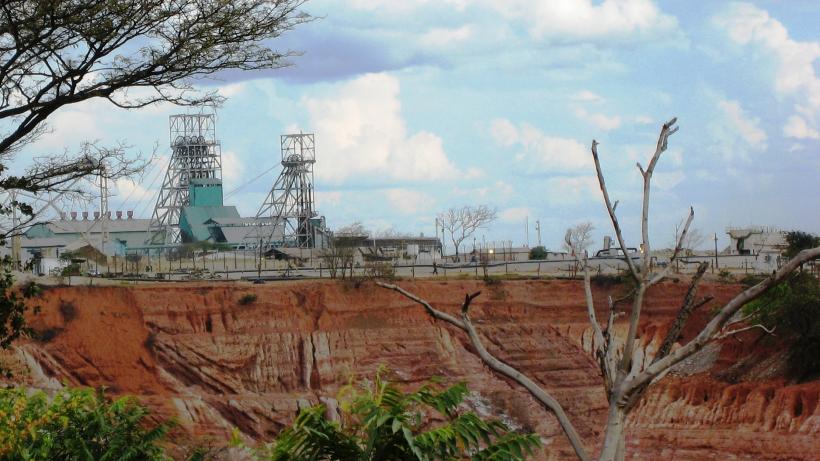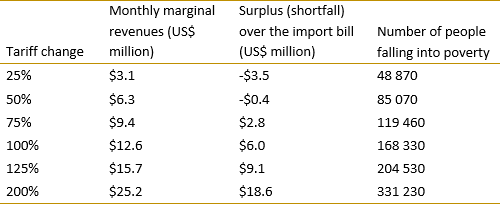
The social cost of electricity price increases in Zambia
The Zambian electricity sector has struggled with frequent power outages since 2016, largely due to declining generation capacity at the main hydropower stations at Kariba. With the worsening drought in recent months, the power deficits have increased, forcing the state power utility ZESCO to announce increased load shedding of up to 15 hours per day in most residential areas.
Declining generation, increasing tariffs
To mitigate the crisis, the government is negotiating to import 300 MW from Eskom in South Africa, at an estimated cost of US$ 22 million per month. Given the tight fiscal space, the government intends to pass on the cost of the imports to all sectors, including the residential sector. Based on various media reports and press statements from both the utility company and regulator, tariff rates could increase by 75%, 106% or 200% in the residential sector.
The proposed adjustments appear quite steep. This raises the question: Are the imminent increases in electricity tariffs in Zambia likely to pose an undue financial and social burden on Zambian households?
The study: Alternate tariff options
We use the data and methodology from our recent research paper (Maboshi, Kabechani and Chelwa, 2019), which finds that the suggested residential tariff increases are quite excessive and pose unjustifiably high financial and social stress on most Zambian households. In our study, we present a range of simple alternate tariff adjustment options, as shown in Table 1 below.
 Table 1: Simulated changes in residential tariff prices
Table 1: Simulated changes in residential tariff prices
Then for each plausible option, we simulated the marginal utility revenues together with the associated increase in poverty that each policy would generate. The extra revenue that would accrue to ZESCO under each option is then compared against the residential sector’s share of the power import bill.
Given that the residential sector consumes about 30% of power in Zambia, the estimated share of the residential sector import costs is US$ 6.6 million (or 30% of the monthly import bill). Tariff increase options that generate additional revenues way in excess of the US$ 6.6 million residential import cost would, therefore, be excessively burdensome on household budgets and impose unwarranted social stress.
Financially and socially optimal tariff adjustments
Based on our simulated revenues and poverty trade-offs shown in Table 2, we find that raising the current tariffs by about 100%, as commonly suggested by the media and authorities, would result in unduly high financial and social burdens for the residential sector in Zambia.
Based on the results in Table 2, any tariff increase beyond 50% is unduly financially burdensome for households and generates unwarranted poverty. Government should, therefore, consider increasing the residential tariffs by less than 50%. Lower hikes would also be feasible if the government is particularly averse to poverty increases and thus willing to subsidise part of the electricity imports.
 Table 2: Simulated utility marginal residential revenue and poverty rates
Table 2: Simulated utility marginal residential revenue and poverty rates
Recommendations
Contrary to media and official statements, which suggest that residential tariffs be increased by about 100% to facilitate the power imports, this piece finds that the break-even adjustment is about half. In moving forward, it is recommended that:
- Residential electricity increases must be implemented sustainably, without undue financial burden being transferred to the residential sector.
- The utility company ZESCO should work to diversify and develop other renewable energy sources, such as solar, to mitigate the effect effects of drought on hydropower generation.
References
Lusaka Times (2019). “Government should instead rational power than increase tariffs by 75%, says Kitwe Business Community”, Lusaka Times, 19 September. Accessible: https://www.lusakatimes.com/2019/09/19/government-should-instead-rational-power-than-increase-tariffs-by-75-says-kitwe-business-community/ (Accessed: 27 September 2019).
Maboshe, M., Kabechani, A. and Chelwa, G. (2019). “The welfare effects of unprecedented electricity price hikes in Zambia”, Energy Policy, 126, pp.108-117. Accessible: https://www.sciencedirect.com/science/article/pii/S0301421518306967?via%3Dihub
Mfula, C. and Mitimingi, T.C. (2019). “Electricity price in Zambia to double after importing power from SA”, Business Day, 17 September. Accessible: https://www.businesslive.co.za/bd/world/africa/2019-09-17-electricity-price-in-zambia-to-double-after-importing-power-from-sa/ (Accessed: 27 September 2019).
Ministry of Energy (2018). Scaling-Up Renewable Energy Programmes (SRE) Investment Plan For Zambia, Government of Zambia. Accessible: https://www.moe.gov.zm/wp-content/uploads/2018/12/Draft_SREP_IP_Zambia.pdf
Editor's note: A policy brief from this project can also be found here.

